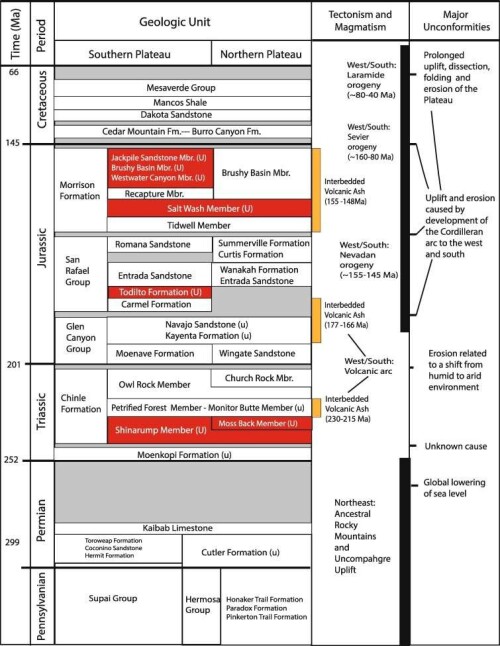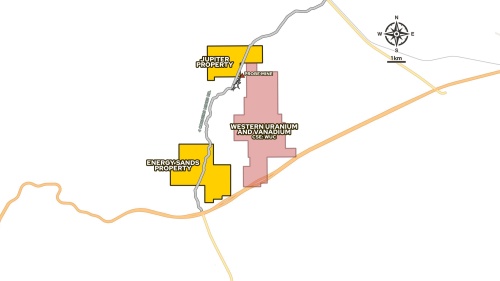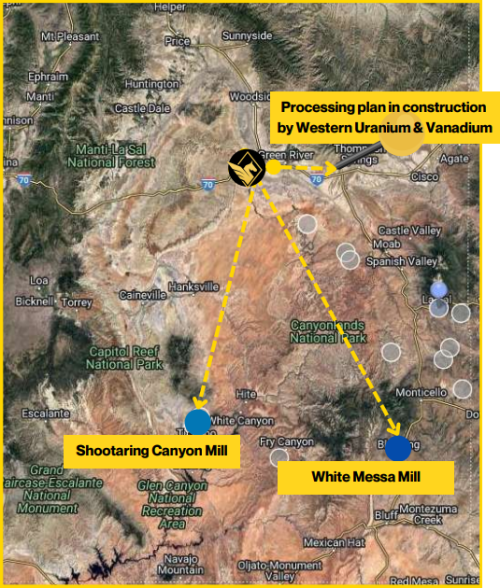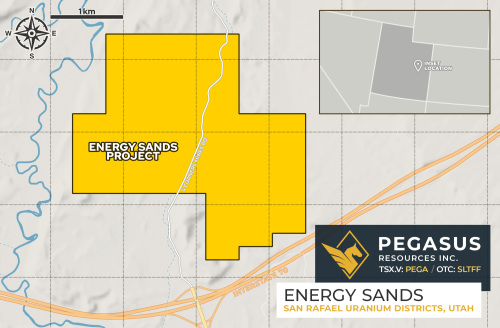Overview
The 100% owned fully permitted Energy Sands Project consists of two properties totaling approx. 1,560 hectares located within the San Rafael Uranium District in Utah, bordering Western Uranium and Vanadium’s San Rafael Project*.
The San Rafael Uranium Project hosts a defined resource at a cut-off grade of 0.06% U3O8 (Based on the Nov-19, 2014 Technical Report filed by Western Uranium.):
- 3,404,600 pounds of U3O8 and 4,595,600 pounds of V2O5 for indicated resources
- 1,859,600 pounds of U3O8 and 2,510,600 pounds of V2O5 for inferred resources
*Mineralization on neighboring properties is not indicative of potential mineralization on the Energy Sands Project.
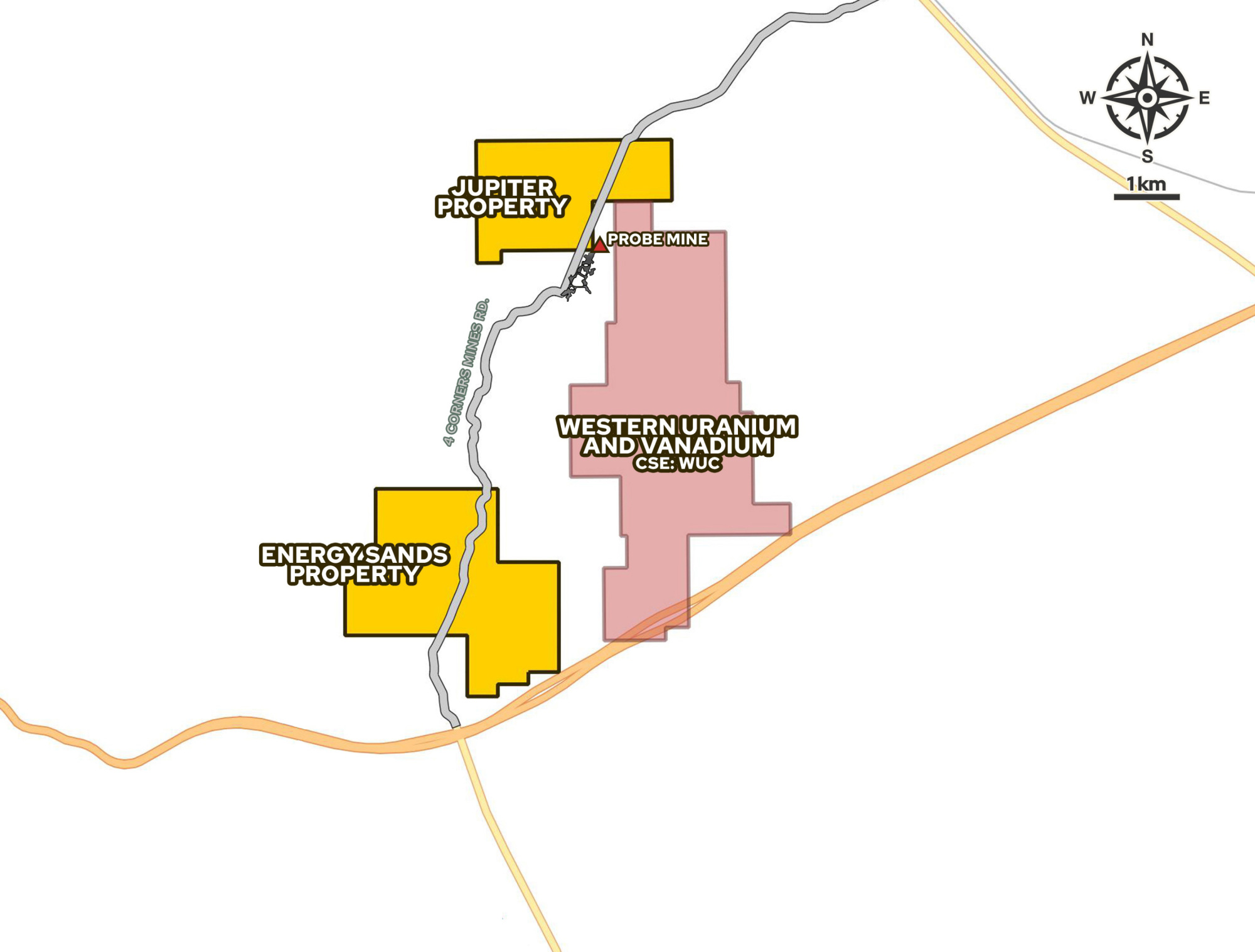
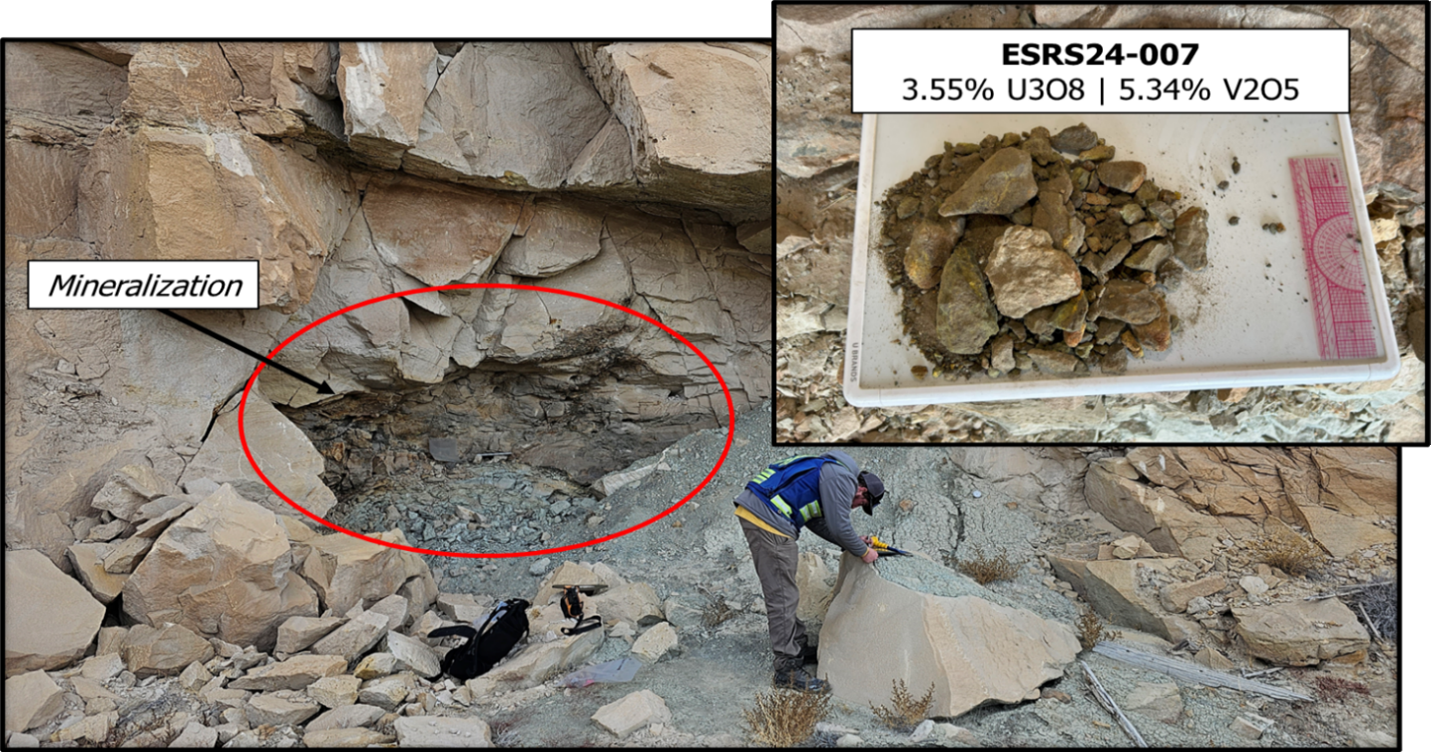
2024 Sampling
During the 13-day program, 41 grab samples were collected using the RS-125 handheld spectrometer to locate areas of a uranium mineralization. Notable samples were collected from mineralized outcrops, tailings, and historical mine workings:
| Sample | Description* | V2O5% | U3O8% |
|---|---|---|---|
| ESRS24-016 | Adit/Outcrop | 0.56 | 18.87 |
| ESRS24-007 | Adit/Outcrop | 5.34 | 3.55 |
| ESRS24-003 | Adit/Outcrop | 5.30 | 1.90 |
| ESRS24-015 | Outcrop | 1.33 | 1.80 |
| ESRS24-009 | Adit/Outcrop | 6.21 | 1.78 |
| ESRS24-001 | Adit/Outcrop | 4.46 | 1.59 |
| ESRS24-037 | Outcrop | 0.73 | 1.39 |
| ESRS24-030 | Outcrop | 2.21 | 1.31 |
| ESRS24-002 | Outcrop | 2.86 | 1.29 |
| ESRS24-013 | Adit/Outcrop | 0.41 | 1.24 |
| ESRS24-010 | Outcrop | 1.11 | 1.21 |
| ESRS24-008 | Outcrop | 5.66 | 1.13 |
| ESRS24-027 | Outcrop | 0.03 | 2.33 |
| *Adit = Historical Adit | |||
Out of 41 samples collected, 13 have demonstrated uranium (U3O8) grades exceeding 1%, with notable results, including sample ESRS24-016 returning 18.87% U3O8 and sample ESRS24-007 returning 3.55% U3O8.
Historical Work
Historical drill data, along with geological and analytical data processed by Dahrouge, provides direct insight into a potential mineralized paleochannel.
Highlights from historical drill data
| Hole ID | From (ft) | To (ft) | Length (ft) | CPM | V2O5 | U308 |
|---|---|---|---|---|---|---|
| 75-1 | 15 | 17.5 | 2.5 | 10,000 | 0.014% | 3.41% |
| 75-2 | 5 | 12 | 7 | 10,000 | 0.583% | 0.507% |
| 75-3 | 12.5 | 15 | 2.5 | 4,500 | 0.89% | 2.16% |
| 75-3 | 15 | 17.5 | 2.5 | 6,000 | 0.596% | 1.87% |
| 75-6 | 0 | 2.5 | 2.5 | 100 | 0.089% | 0.39% |
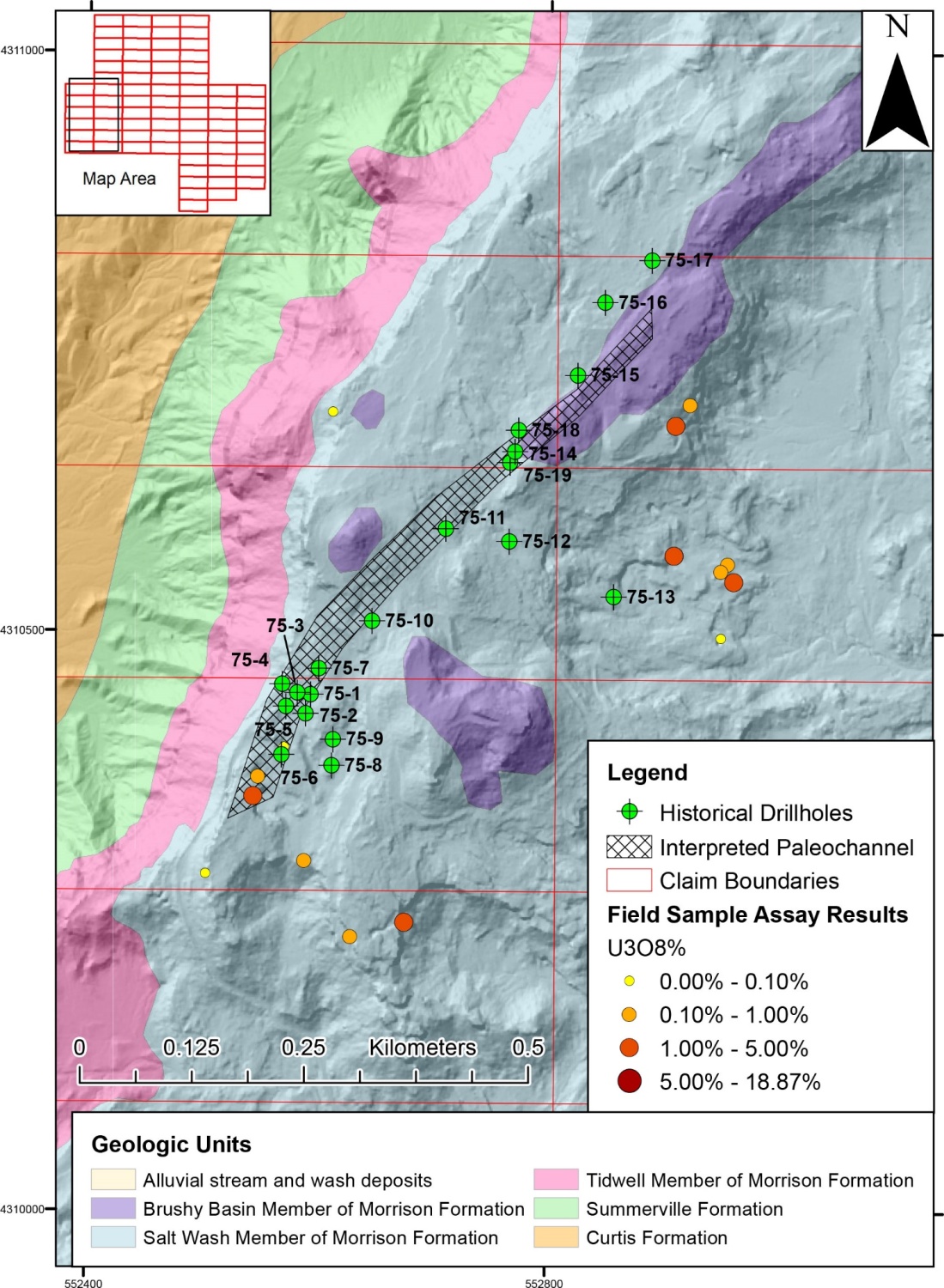
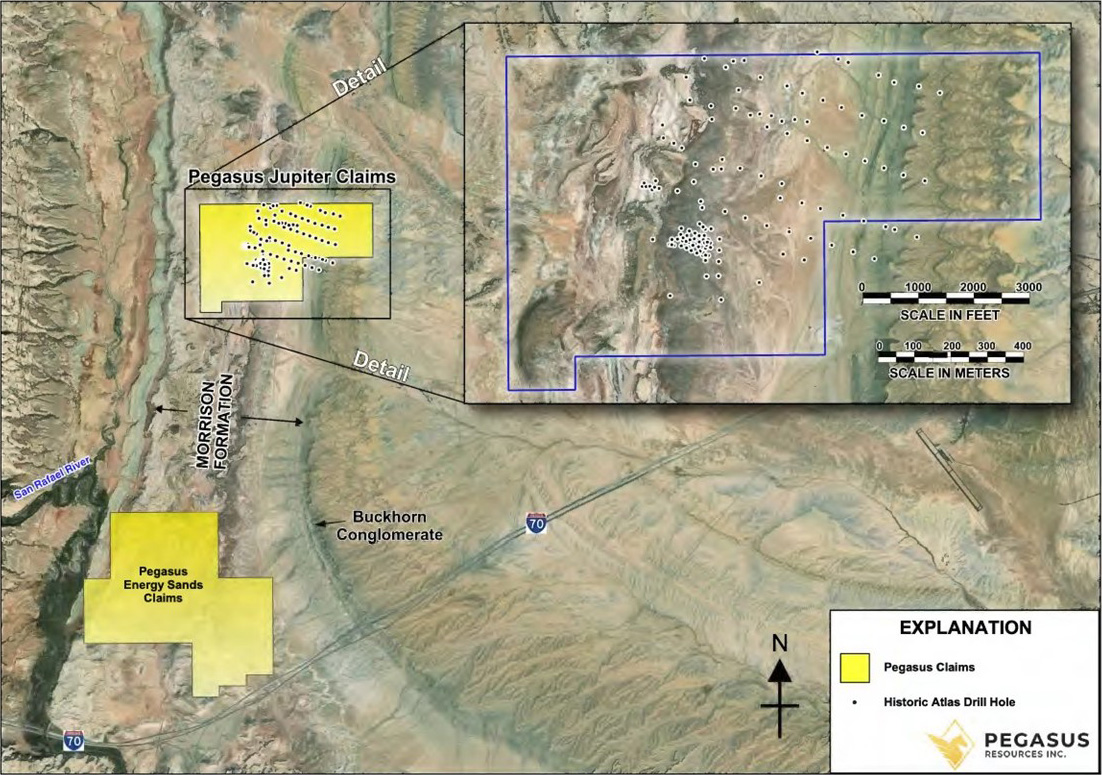
Jupiter Acquisition
The Jupiter Property is located just 3 km north of Energy Sands and was previously held by Atlas Minerals from 1972 to 1983. During this period, Atlas Minerals conducted approximately 100+ drill holes on the Jupiter Property, with the greatest density occurring in the vicinity of the northeast corner of section 15. The extensive drilling and exploration activities conducted by Atlas Minerals revealed promising results with notable uranium intercepts, demonstrating significant potential.
Geology
Uranium mineralization within the project is primarily situated in the Salt Wash Member of the Jurassic Morrison Formation. The Tidwell Mineral Belt in the San Rafael Uranium District hosts the mineralization, which is organized in a series of northeast-oriented trends. The individual mineralized bodies exhibit a tabular to lenticular morphology, aligning their long axis along the identified trend.
The Energy Sands project is characterized by sandstone-hosted uranium and vanadium mineralization, demonstrating significant potential for the establishment of valuable resources.
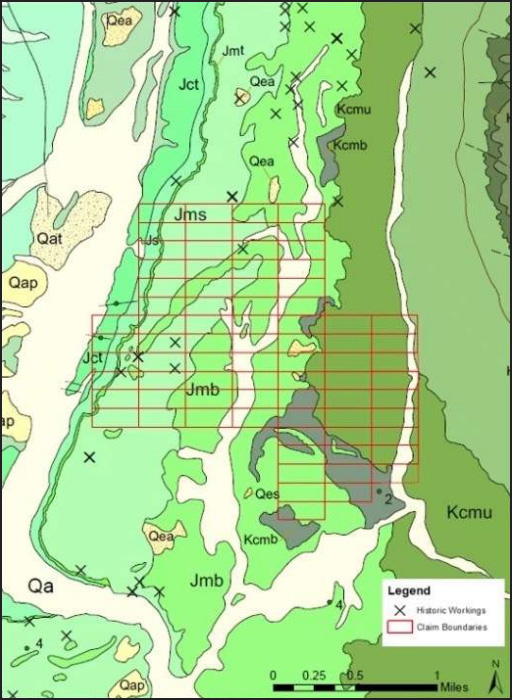
Looking Forward
Jupiter
We are developing a robust geological model that will substantially enhance our resource development plans. Utilizing extensive historical drilling data, our goal is to refine exploration strategies and produce a resource estimate that meets the current CIM Definition Standards on Mineral Resources and Mineral Reserves.
Our exploration approach at the Jupiter Project consists of twinning historical drill holes, detailed logging of old drill holes and the identification of new drill targets.
Energy Sands
Following a successful ground program in January 2024, which involved a detailed review of historical drill logs, we have moved forward with securing the necessary drilling permits for the Energy Sands project. Once permits are in place, our next steps include initiating the tendering process to source the essential equipment and skilled crews required for a comprehensive drilling program.
Our focus will be on targeting and further investigating potential mineral-hosting paleochannels that have been identified across the property, aiming to delineate and expand these mineralized zones.
“We are entering an exciting phase of exploration with the acquisition of the Jupiter Property and the work completed on the Energy Sands property. The strategic integration of these projects allows us to leverage extensive historical data and modern geological techniques to maximize our exploration potential. Our dedicated team is focused on advancing these projects rapidly, aiming to enhance our understanding of the mineral resources and expand our operational scope. With our upcoming drill program set to commence shortly, we are confident in our ability to deliver substantial value to our shareholders and reinforce Pegasus Resources’ position as a leader in the uranium sector.”
- Christian Timmins, CEO & President
Image Gallery

